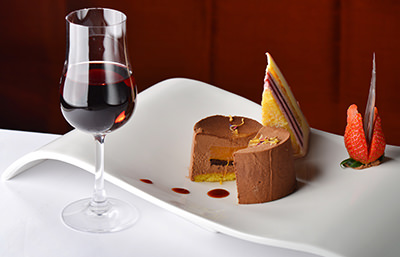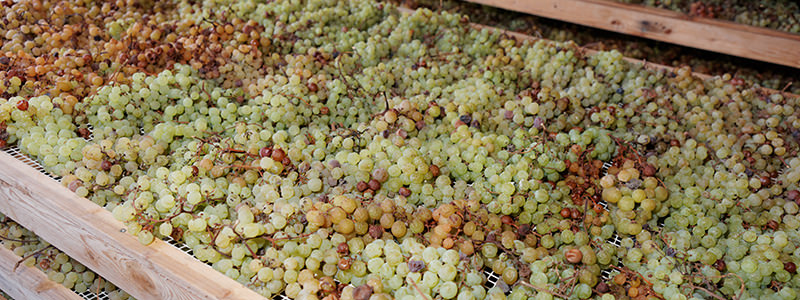Noble rot. It sounds like an industrial band that’s booked a gig in a warehouse somewhere, but it’s actually what makes dessert wine scrumptiously sweet. Noble rot, known more formally by its scientific name Bortrytis cinerea, is a helpful fungus that can affect wine grapes. So what exactly is Noble rot and how does it help your wine?
Infection usually begins when grapes become ripe. Then, if grapes are exposed to dryness and become raisined, the fungus flourishes. The shriveled grapes begin to lose their water while maintaining their same level of sugar content, which makes for a sweet and high alcohol wine. But because the grapes hold less liquid, more of them are needed to make the same amount of wine as uninfected grapes – when the fungus first hits, the winemakers conduct a delicate dance with mother-nature to ensure the grapes become infected and raisinate without losing too much yield. When the grapes are finally picked what you’re left with is a succulent, thick wine perfect for dessert.

Often, Noble rot affected grapes are higher in alcohol content and unusual flavor. Why the latter? One answer is because these shriveled fruits often have a higher amount of phenylacetaldehyde, an aroma-delivering compound. Next time you encounter a glass of a rot-affected wine, take a sniff and think about which flavors stand out to you. You might get a whiff of beeswax and unusual spice.
Rotten wines (sorry, we couldn’t resist), often pair well with fruit, cheesecake, sugar cookies, and lighter desserts like panna cotta and crème brûlée. Great examples of Noble rot wines are often late harvest variations of Rieslings and Chardonnays, and dessert wines like Sauternes. So grab a bottle and enjoy mother nature at work!
Header image via Shutterstock.com

